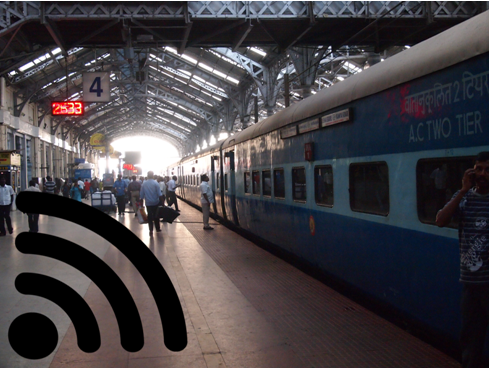|
The economy’s biggest gain from demonetisation is the speed at which e-transactions are increasing. They say that the biggest innovations take place during times of adversity and the Indian Railway is a fine example by using a situation to its advantage.
The ‘demon of demonetisation’ or ‘demonetisation blues’ has become the nomenclature post demonetisation and reams have been written on its effect and also how it affected millions across and beyond the country. However, the rail behemoth is looking at the brighter side and a trickledown effect if one may call it to transform how passengers use the facility and is in the process of changing the way railway stations function in the country. In what can be termed as a first time endeavour, Kacheguda Railway station in Hyderabad was transformed into a completely digitally enable station where a passenger right from parking his vehicle, buying a bottle of water, tickets, using the cloak and waiting rooms and making transactions could do with digitally. All vendors from teas stall owners, fruit sellers, catering units, book stalls have been given PoS. This experiment is hardly 20 days old and the people are already warming up to the idea and 20 per cent of the transactions are digital. Buoyed by the success, the Indian Railway has decided to make all stations digitally accessible and has included the digitisation of railway stations across the country. Tea Stalls, Fruit and Juice Centres, Catering Units, Book Stall, Dairy Parlour have been enabled with Point of Sale (PoS) machines. In 2017-18, Indian Railways plans to make 25 important stations as ‘Digi-Pay’ stations. The Indian Railways has included the idea of ‘Digi-Pay stations in its business plan for the financial year which was released last week by the Minister of Railways. The economy’s biggest gain from demonetisation is the speed at which e-transactions are increasing. They say that the biggest innovations take place during times of adversity and the Indian Railway is a fine example by using a situation to its advantage. While pundits debate whether the data released by the Central Statistics Office (CSO) showing India’s third quarter GDP growth logged at 7% in December quarter could be taken seriously or whether other methodologies need to be assessed, there is no difference on issue that there is a spike in digital transactions. The Indian railway runs 21,000 trains every day to transport 23 million passengers. If even 70 per cent of these passengers turn to cashless transactions, the benefits are huge. By next year, 25 stations in the country would be digital. The revenue from ticket booked through cashless means in reserved and unreserved segment has increased from 58% to 68% and 6% to 8% respectively post demonitisation. The number of debit cards rose from 739 million to 818 million since October. The number of credit cards from 27 million to 29 million. The value of card transactions on PoS machines shot up more than 41 per cent from October till December. Demonetisation blues have had their part to play and still does but what the Modi government has done in one single stroke is to open up a wide array of opportunities to do business. The Indian Railways has taken the opportunity. Will young entrepreneurs come up with ideas, there is a lot of opportunity for the willing.
1 Comment
Leave a Reply. |
Details
AuthorOfficial Blog of IndiaGlobal. Authors are invited to submit articles and views. Contact us for more information. Archives
January 2024
Categories |


 RSS Feed
RSS Feed